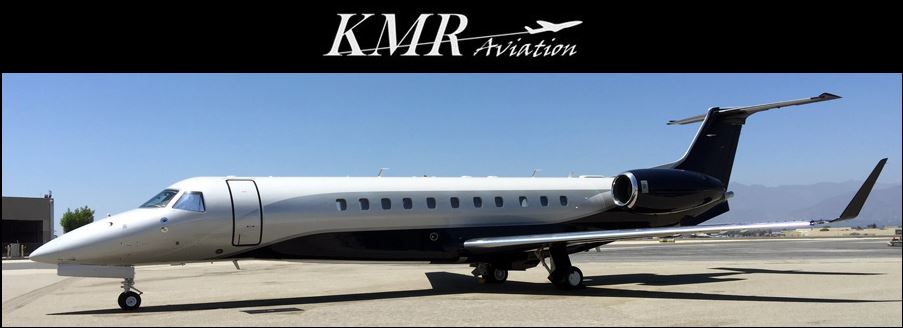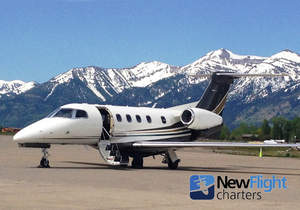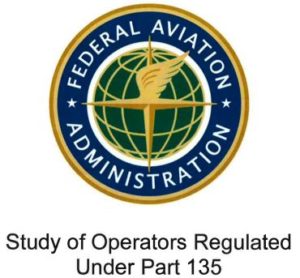– A chorus of charter executives in the private aviation industry say business is booming due to several factors – “This is a tremendous time to be in aviation,” according to Cory Rossi, who, with his wife, Shari, owns Eagle Air, a charter operator based at Westchester County Airport (HPN) in White Plains.
By Dave Donelson, Westchester Magazine, 5/10/16
“It’s a very large business in this area,” says Linda Schiavone, charter sales manager for White Cloud Charter, which is also based at HPN. “Just think about the number of major corporations and wealthy individuals; this is the area for it.” According to Rossi, HPN is the third-busiest airport in the country in terms of non-airline flights. Only Teterboro Airport in New Jersey and Van Nuys Airport in California boast more private traffic.
According to the FAA, there were about 125,000 charter, air taxi, and private flights at HPN in 2014, which represented 82 percent of the total takeoffs and landings there. What’s more, they carried more passengers than did the scheduled airlines.
It’s not hard to see why private aviation is growing in popularity: Anyone who suffers the agitation of flying commercial from LaGuardia Airport (LGA)—which Vice President Joseph Biden once described as reminiscent of something in a Third World country—could attest to that. Much the same holds true for JFK and Newark. “The all-day hassle with a two-hour flight in-between is becoming more and more common,” Rossi points out. “Our clientele recognizes this and says: ‘First class isn’t at the level it once was.’”
Eagle’s customers, like those of other charter companies we spoke with, experience something entirely different. Rossi describes the charter experience like this: “Let’s say you live within a 20-minute drive to Westchester airport. Your car drives right on the tarmac to the aircraft; the red carpet is rolled out; your catering is on board; and you have WiFi on the plane. The ground crew will handle your bags and park your car, and the plane will depart within 10 minutes of boarding. At your destination, you will have the same experience on the ground.” Sure, it costs more, but what is your time and comfort worth?
The private-aviation business isn’t monolithic. Some companies, like White Cloud, charter only their own planes, which are also at the (occasional) call of the company’s corporate parent, Conair Corporation. Others, like Aircraft Services Group, operate and manage planes owned by others, providing everything from crews to maintenance, as well as charter service for the aircraft, much like a vacation-home owner who rents out a condo when they’re not using it. Eagle Air does both, as does Tradewind Aviation, which is based in Oxford, Connecticut, but offers flights from HPN.
|
 Eagle Air Eagle Air
|
Then, there are strictly private planes owned by individuals and corporations for their own use. They, along with the charter operators, support another big part of the business, fixed-base operators. FBOs, as they are known, provide hangars, fuel, and on-site maintenance, as well as ground amenities like passenger lobbies, parking, and rental cars, to planes going and coming through the airport. HPN has five FBO facilities.
Tradewind, meanwhile, serves yet another part of the market. “We’re best known for our Nantucket shuttle,” explains Tradewind president Eric Zipkin. “It is a shared charter, where people buy individual seats on the flights.” The service started with Friday-through-Sunday flights only but has grown to seven days a week. They fly a similar service to Boston and Martha’s Vineyard. The scheduled service is a good business on its own, Zipkin says, but it also serves another purpose: “Our shuttle service is a good marketing concept because people learn about us, then come back and charter individual flights.”
Tradewind operates 18 aircraft, up from 12 just two years ago. The company owns 11 planes, with the balance owned by others. “Our business was up almost 30 percent in 2015, and it’s full steam ahead for this year,” Zipkin says. “Margins in this business run the gamut. Boutique aircraft management companies like ours are in the 20- to 30-percent range. It’s also a high-risk business: If you lose management of an aircraft or two, there goes your profit.”
White Plains-based Wings Air Helicopters represents yet another variety of local private aviation: helicopter service. Wings’ president, Javier Diaz, says his five helicopters serve three distinct markets, including personal travel. “We do up to seven flights a day to the Hamptons,” he says, adding that Saratoga Springs and other locations upstate are popular, too. “We also have a strong business with the Atlantic City casinos, as well as Mohegan Sun and Foxwoods.”
Business travelers take advantage of the versatility and convenience of helicopter service, especially out of Manhattan. “If you want to fly from NYC to Pittsburgh,” Diaz points out, “all you have to do is go to one of the heliports, and you’ll be in the air 90 minutes before you could even get on an airplane from LGA.” About 65 percent of his passengers fly from one of the three heliports in Manhattan. Then there is the aerial-movie-and-photography business, which is so good, Diaz is a member of the Screen Actors Guild.
“As people become busier and wealthier,” Diaz says, “their time becomes more valuable. They need to get to places ‘now,’ and that’s why the demand [for private aviation] is good. The demand will be there for the foreseeable future.”
Speaking of the future, does it hold tailwinds or headwinds for the private-aviation industry? Not surprisingly, regulation and technology may well be the determining factors. Google “air charter Westchester,” and you’ll get about 154,000 results. Almost all of them are for charter brokers—unregulated companies that don’t own, fly, or manage planes and may not even have an office. Brokers aren’t new, but their numbers mushroomed as instant worldwide communication enabled anyone with a cell phone and email address to open shop. Good ones, who can be reached 24/7 and have strong relationships with the charter companies, add value to the experience for both their customers and the airplane owners—but it pays to shop around.
A wave of new private-air-service concepts is rising along with demand in the market. As with anything new, some succeed and others don’t. Beacon Air debuted a Netflix-like subscription service in which passengers paid a flat monthly fee for unlimited flights from HPN to Boston last year, but it has already ceased operations.
ImagineAir, headquartered in Atlanta, started service in 2007 and entered the Westchester market two years ago. Its concept? On-demand private jet service at sharply reduced rates. Its service is aimed at business travelers who might be tempted to drive to their destinations. “We basically turn a three- to eight-hour drive into a one- to two-hour flight,” says President and CEO Ben Hamilton, who adds, “Our average price point is around $1,200, whereas a private jet might be $7,500.”
ImagineAir is able to offer the service because they fly a fleet of Cirrus SR22s, a three-passenger craft that’s very efficient, Hamilton explains. “We do mostly business trips, and the majority of them are three people or fewer. We have enough scale in our fleet of 11 aircraft to mix and match flights and fill dead legs, passing those savings on to the customer.” The company also handles bookings online rather than through a call center and, like a scheduled airline, uses demand-pricing models. “Our average customer books about four days in advance. You can book the same day if it’s available, but the price gets a little more expensive as the time gets closer,” Hamilton explains.
Any number of companies have been hailed as the “Uber of private aviation,” although none have (or probably will) been able to get past the FAA prohibition against selling seats in personal planes flown by amateur pilots. The safety requirements that charter operators have to meet are a major factor. That’s not to say there aren’t companies getting closer. “There are companies who have partnered to market empty seats,” White Cloud’s Schiavone points out. “If you’re in Chicago and want to get back to White Plains, there’s an app for that now. If there’s an aircraft flying empty on a leg, it just makes sense.”
Blue Star Jets, a NYC-based jet broker, recently launched an app that includes 24/7 personal telephone contact, to follow-up on the booking you make on your smartphone. Their business is designed to fill the 30 percent of business aircraft they estimate fly empty to or from their charter destination. The company claims that within four hours of booking a flight, you’ll be in the air.
Still, the industry does face some headwinds. “The uncertainty of the regulatory environment is a long-term obstacle,” Zipkin explains. Potential changes in security procedures, for example, could put a crimp in the private-aircraft experience. “We have internal security, but not the stand-in-line, take-your-shoes-off type of thing,” he says.
Another problem area is a shortage of pilots, according to Zipkin. “The FAA changed the rules for airline requirements for copilots, and that has had a ripple effect throughout the industry,” he says. “We used to pay twice what an entry-level airline pilot would make, because we wanted to attract the best candidates. The airline had trouble filling those seats, so they started raising their pay, which has set off a sort of race.”
Rossi adds one more industry-wide threat: budget constraints on air-traffic control. “The federal government has threatened to shut down operations at a number of small airports around the country,” he says. The ability of private-flight passengers to land at small airports, like Hilton Head Island Airport instead of Savannah International, is a big attraction for the business. “I’d hate to see that becoming a limiting factor on growth of the industry,” Rossi notes.
Overall, however, the private-aviation business in Westchester is strong. As Zipkin says, “The challenges we face are those faced by any business that’s growing. Our product has been very well received, and the market is growing here, so it’s onward and upward.”
Source: Article in Westchester Magazine online




 According to the company, by total hours flown, Jet Edge is ranked eighth in Aviation Research Group’s “Top US Part 135 Operators” mid-year report, 2016. With nearly 9,000 charter hours flown on-fleet by the midpoint of the year, this ranking establishes Jet Edge within the top 1 percent of more than 1,000 charter operators globally. Last month, Jet Edge ranked first by a magnitude greater than 10 percent when calculating average distance per flight segment, or cycle, on the company’s large-cabin fleet with 1,198 nautical miles per flight segment.
According to the company, by total hours flown, Jet Edge is ranked eighth in Aviation Research Group’s “Top US Part 135 Operators” mid-year report, 2016. With nearly 9,000 charter hours flown on-fleet by the midpoint of the year, this ranking establishes Jet Edge within the top 1 percent of more than 1,000 charter operators globally. Last month, Jet Edge ranked first by a magnitude greater than 10 percent when calculating average distance per flight segment, or cycle, on the company’s large-cabin fleet with 1,198 nautical miles per flight segment.


 U.S. air charter industry leader New Flight Charters announces the Better Business Bureau (BBB) has awarded it an A+ rating, according to a company press release.
U.S. air charter industry leader New Flight Charters announces the Better Business Bureau (BBB) has awarded it an A+ rating, according to a company press release. In addition, as of 2016 the BBB has determined that New Flight Charters is now a BBB Accredited Business, affirming that it meets and will continue to abide by the following BBB standards; Build Trust, Advertise Honestly, Tell the Truth, Be Transparent, Honor Promises, Be Responsive, Safeguard Privacy and Embody Integrity.
In addition, as of 2016 the BBB has determined that New Flight Charters is now a BBB Accredited Business, affirming that it meets and will continue to abide by the following BBB standards; Build Trust, Advertise Honestly, Tell the Truth, Be Transparent, Honor Promises, Be Responsive, Safeguard Privacy and Embody Integrity.





 Eagle Air
Eagle Air
